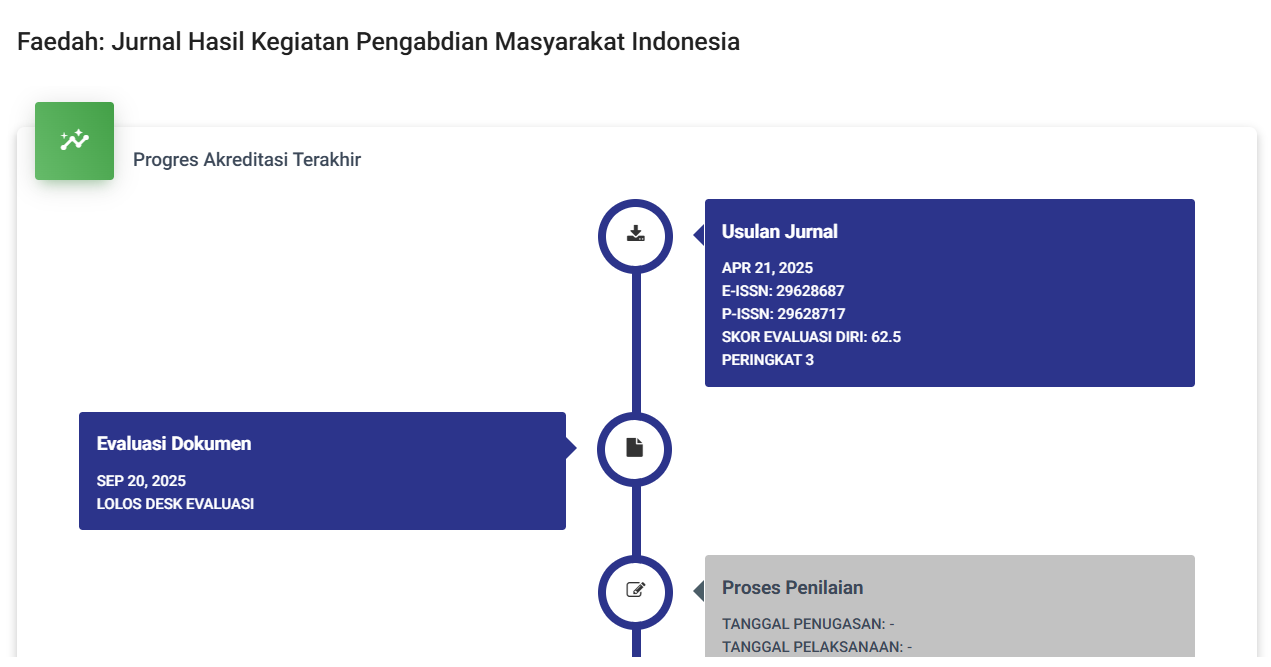Pembuatan Sabun Padat Berbahan Minyak Atsiri Skala Rumah Tangga
DOI:
https://doi.org/10.59024/faedah.v1i3.256Keywords:
solid soap, lemon oil, densityAbstract
Making this soap aims to provide an explanation for making solid soap made from lemon essential oil as an effort to improve community skills and can be applied by the community in the future as a business. Soap making is done by heating coconut oil at a temperature of 800C. Mix 30% NaOH with heated oil until it becomes homogeneous, stirring continuously until the saponification process is perfect. Add the stearic acid which has been dissolved in the alcohol and stir until smooth, add the white sugar and stir again, add the glycerin while stirring, add the foam booster while continuing to stir until the mixture becomes homogeneous. Add coloring and fragrance, namely lemon oil, which is carried out at 400C. Pour the mixture into the mold and let it sit for 15-30 minutes. The soap has hardened and can be removed from the mold. The tests performed were preference, allergy, aroma, color, froth and density tests. The result shows that solid soap has been successfully made, but still requires some further refinement regarding the density and transparency of the soap. With the procedures for making soap and the analytical test that the author described above, new knowledge and skills can be used for the community as well as solid soap business opportunities
References
Asngad, A., dan Nopitasari, N. (2018). Kualitas Gel Pembersih Tangan (Handsanitizer) dari Ekstrak Batang Pisang dengan Penambahan Alkohol, Triklosan dan Gliserin yang Berbeda Dosisnya. Bioeksperimen: Jurnal Penelitian Biologi, 4(2): 61–70.
Ainiyah, R., Dan Utami, C. R. 2020. Formulasi Sabun Karika (Carica pubescens) Sebagai Sabun Kecantikan Dan Kesehatan. Agromix, 11(1), 9–20.
Darsana, I. G. O., Besung, I. N. K., dan Mahatmi, H. 2012. Potensi Daun Binahong (Anredera Cordifolia (Tenore) Steenis) dalam Menghambat Pertumbuhan Bakteri Escherichia Coli Secara In Vitro. Indonesia Medicus Veterinus, 1(3): 337–351.
Ivo, N. P. 2019. Efektivitas Pemberian Sari Jeruk Nipis Dan Minyak Atsiri Kulit Jeruk Nipis (Citrus aurantifolia) dalam Menurunkan Angka Kuman di Lantai UGD RSUD Kota Madiun. Stikes Bhakti Husada Mulia Madiun.
Khuzaimah, S. (2018). Pembuatan sabun padat dari minyak goreng bekas ditinjau dari kinetika reaksi kimia. Ratih: Jurnal Rekayasa Teknologi Industri Hijau, 2(2), 11.
Nuryati, N., dan Lestari, E. 2021. Pengaruh Penambahan Serbuk Daun Pegagan terhadap Karakteristik Sabun Padat. Jurnal Teknologi Agro-Industri, 8(2): 77- 88.
Rahayu, S. 2017. Formulasi dan Evaluasi Mutu Fisik Sabun dari Ekstrak Rumput Laut Merah (Euchema cottoni). Jurnal Wiyata: Penelitian Sains dan Kesehatan, 2(1), 14-18.
Ruamba, Y. W. 2019. Hubungan Personal Hygiene Pada Anak 6-12 Tahun Dengan Kejadian Penyakit Kulit Scabies di Rt 10 Rw 6 Kelurahan Sawunggaling Kecamatan Wonokromo Kota Surabaya. Universitas Merdeka Surabaya.
Syukrini, R. D. 2016. Pengaruh Aromaterapi Terhadap Tingkat Kecemasan Pada Ibu Persalinan Kala I di Kamar Bersalin Rsu Kab. Tangerang. UIN
Utami, M. R., dan Ardiyanti, Y. 2019. Analisis Aktivitas Toksisitas Beberapa Minyak Atsiri Dengan Metode Brine Shrimp Lethality Test. Journal Of Holistic And Health Sciences, 3(1): 14–20
Widyasanti, A., Farddani, C., dan Rohdiana, D. 2016. Pembuatan Sabun Padat Transparan Menggunakan Minyak Kelapa Sawit (Palm Oil) Dengan Penambahan Bahan Aktif Ekstrak Teh Putih (Camellia sinensis). Jurnal Teknik Pertanian Lampung, 5(3): 125–136.









